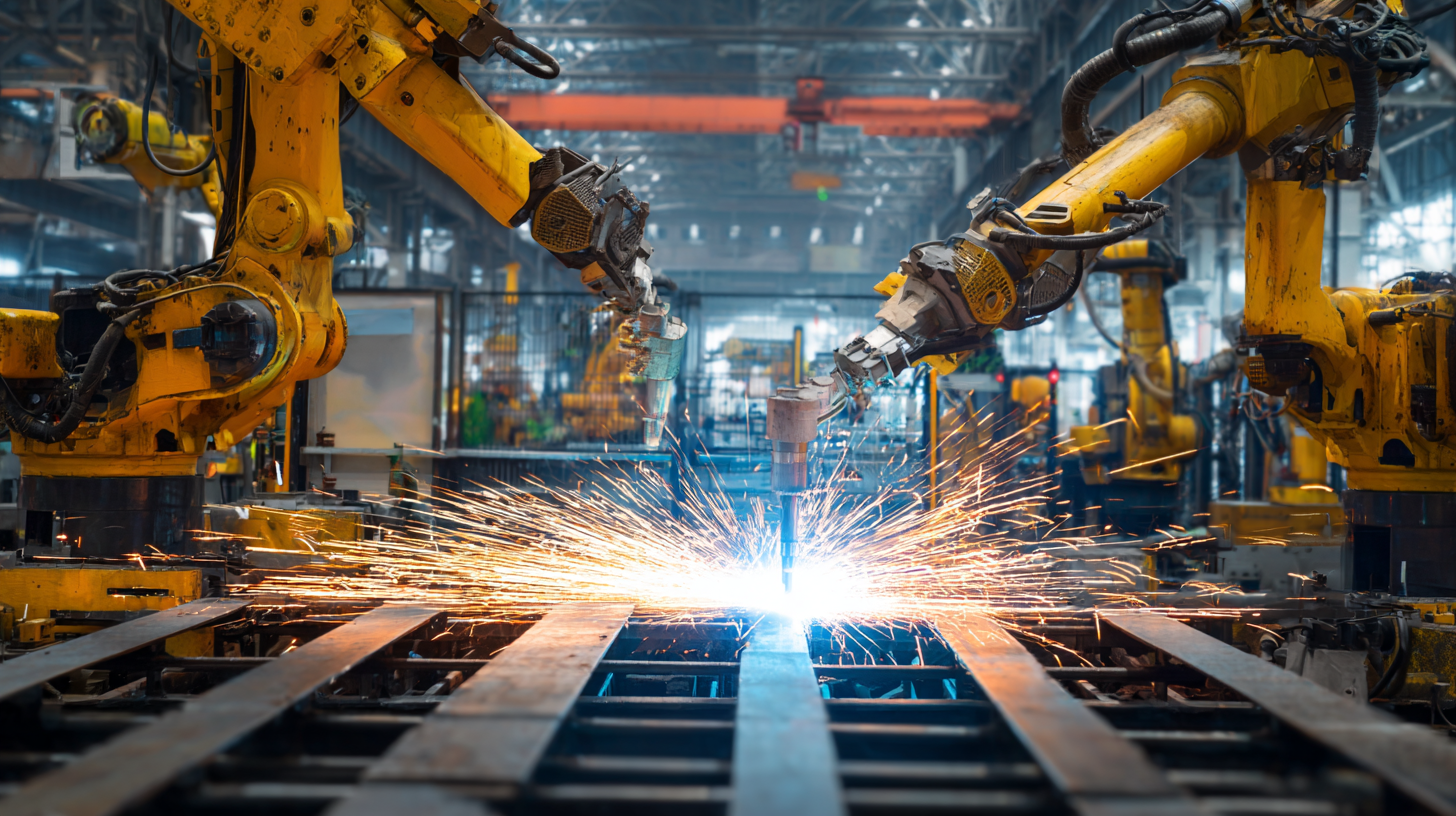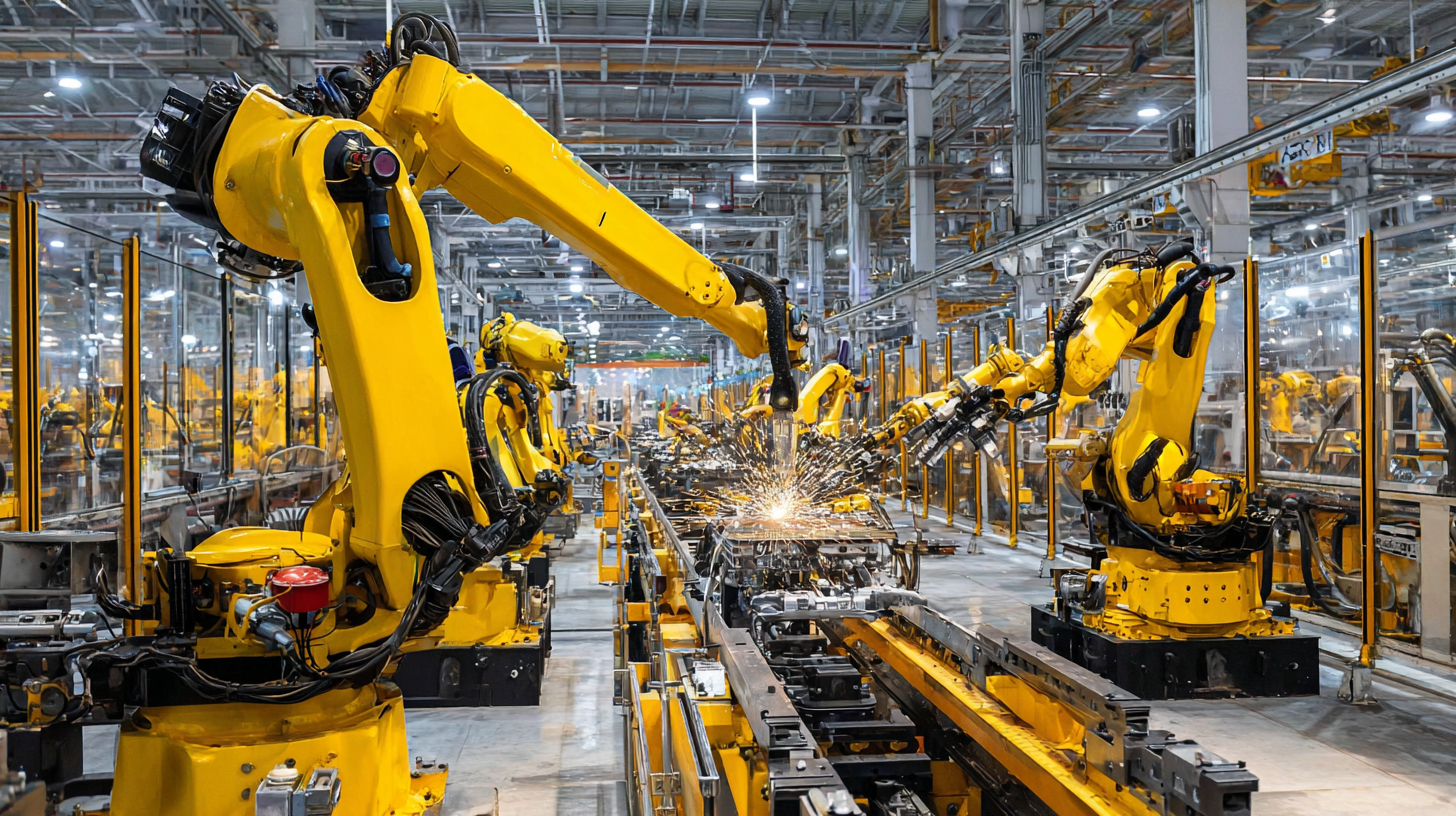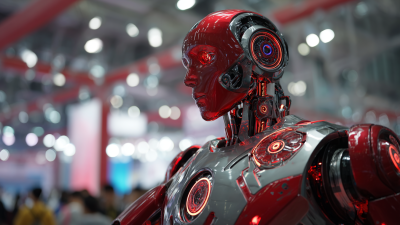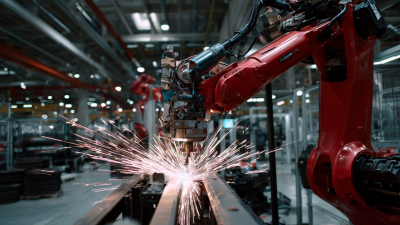Why Robotic Welding Systems Are Revolutionizing the Manufacturing Industry Today
In recent years, the manufacturing industry has undergone a significant transformation driven by advancements in automation and technology. Among these groundbreaking innovations, robotic welding systems have emerged as a game-changer, revolutionizing traditional welding practices and enhancing overall efficiency in production processes. These sophisticated systems not only improve precision and consistency but also minimize human error, leading to higher-quality outputs and reduced operational costs.

As manufacturers seek to remain competitive in an ever-evolving market, the adoption of robotic welding systems has become an imperative. These systems offer unparalleled speed and accuracy, enabling companies to meet increasing demands while maintaining stringent safety standards. Moreover, the integration of artificial intelligence and machine learning in robotic welding systems is paving the way for smarter manufacturing solutions, where machines can adapt and optimize their operations in real-time.
In this article, we will explore the various ways robotic welding systems are transforming the manufacturing landscape, highlighting their benefits and the future potential they hold for industries worldwide. By embracing this technology, manufacturers are not only enhancing their productivity but are also setting a new standard for excellence in the sector.
Impact of Robotic Welding on Production Efficiency in Manufacturing
Robotic welding systems are significantly enhancing production efficiency in the manufacturing sector, driven by advancements in AI and automation. These systems allow for precise and consistent welding processes, reducing human error and increasing operational speed. As manufacturers face rising competitive pressures, the integration of robotic systems enables them to streamline workflows, ultimately leading to faster turnaround times and improved product quality.
The adoption of robotic welding is not limited to traditional industries; sectors such as automotive are experiencing a notable transformation. The market for welding robots and cobots is expanding rapidly, as these technologies meet the increasing demands for precision and scalability, particularly in electric vehicle production. With projections indicating substantial growth in robotic applications across various industries, it's clear that robotic welding is revolutionizing how manufacturers achieve efficiency and sustainability, fostering innovation and adaptability in a rapidly evolving landscape.
Cost Savings Achieved Through Automation in Welding Processes
The implementation of robotic welding systems has ushered in a new era of efficiency and cost-effectiveness in the manufacturing industry. One of the most significant advantages of automation in welding processes is the substantial reduction in labor costs. By utilizing advanced robotic technologies, manufacturers can achieve consistent, high-quality welds without the need for extensive human labor. This shift not only frees up skilled workers to focus on more complex tasks but also minimizes the expenses associated with hiring and training personnel.
Moreover, robotic welding enhances productivity through its ability to operate continuously with minimal downtime. Unlike manual welding, which is often slowed by breaks and fatigue, robotic systems can operate around the clock, significantly increasing output. This continuous operation translates to faster project turnaround times and higher volumes of production without compromising quality. As a result, manufacturers experience a remarkable boost in their overall profitability, showcasing how automation in welding processes is not merely a trend but a transformative movement within the industry.
Advancements in Robotic Technology Enhancing Welding Capabilities
The advancements in robotic technology have significantly enhanced welding capabilities, driving a transformative shift in the manufacturing industry. With the integration of artificial intelligence and machine learning, modern robotic welding systems are equipped to adapt to various welding tasks with remarkable precision and efficiency. These systems can analyze weld quality in real-time, adjusting parameters on-the-fly to ensure optimal results, thereby reducing human error and enhancing product consistency.
Moreover, the latest robotic welding setups incorporate advanced sensors and vision systems that improve their ability to handle complex geometries and differing material types. This flexibility not only speeds up production cycles but also enables manufacturers to experiment with innovative designs that were previously difficult to execute manually. By automating and optimizing the welding process, companies can significantly reduce labor costs while increasing output, marking a new era in manufacturing focused on efficiency and quality.
Safety Improvements in Workplaces Utilizing Robotic Welding Systems
Robotic welding systems are transforming the manufacturing landscape not only through efficiency but also by significantly enhancing safety in the workplace. With automated welding processes taking the place of manual labor, the risk of workplace injuries and accidents is considerably reduced. These systems operate in controlled environments, limiting human exposure to hazardous conditions such as extreme heat, toxic fumes, and heavy machinery. As a result, companies can protect their workforce while maintaining high productivity levels.
Tips for Improving Safety with Robotic Welding Systems:
1. Regular Maintenance: Schedule routine inspections and maintenance to ensure that robotic systems function correctly, minimizing the risk of malfunctions that could lead to accidents.
2. Training: Invest in thorough training programs for employees to understand the capabilities and limitations of robotic welding technology, ensuring they can interact safely with these systems.
3. Safety Protocols: Implement strict safety protocols and emergency procedures to be followed when operating or working near robotic welding machines, safeguarding every employee’s well-being.
The integration of robotic welding not only advances efficiency but also fosters a culture of safety, allowing workers to feel more secure in their environment while driving innovation in the manufacturing sector.

Future Trends: The Evolution of Robotic Welding in Industry 4.0
The rise of Industry 4.0 marks a transformative era for robotic welding systems, characterized by enhanced connectivity, automation, and data exchange. As manufacturers increasingly integrate smart technologies, the evolution of robotic welding becomes apparent. Advanced algorithms, real-time monitoring, and machine learning are driving efficiency and precision in welding processes, allowing for significant reductions in production time and costs.
Tips: To maximize the benefits of robotic welding, ensure your systems are equipped with the latest sensors and software that provide comprehensive data analysis. This real-time data can help predict maintenance needs and improve output quality.
Moreover, as artificial intelligence continues to evolve, it is likely that future robotic welding systems will not only enhance their operational capabilities but also adapt to various welding conditions with minimal human intervention. This adaptability will further streamline workflows and elevate overall productivity in manufacturing environments.
Tips: Consider investing in training programs for your workforce to keep them adept at managing and collaborating with these advanced robotic systems. A well-prepared team can better leverage technology, ensuring smoother transitions during upgrades and expansions in production capabilities.

Related Posts
-

Robotic Process Innovations at the 138th Canton Fair 2025 Transforming Industry Standards in China
-

Revolutionizing Metal Fabrication with Seam Tracking Welding Technology for Precision Parts Production
-

Unlocking the Future of Automation with Advanced Robot Vision Systems
-

Exploring the Future of Manufacturing: How Welding Robots Revolutionize the Industry
-

Exploring the Future of Robotic Process Automation for Business Efficiency
-

Exploring the Future of Robotic Vision: Innovations That Transform Industries






